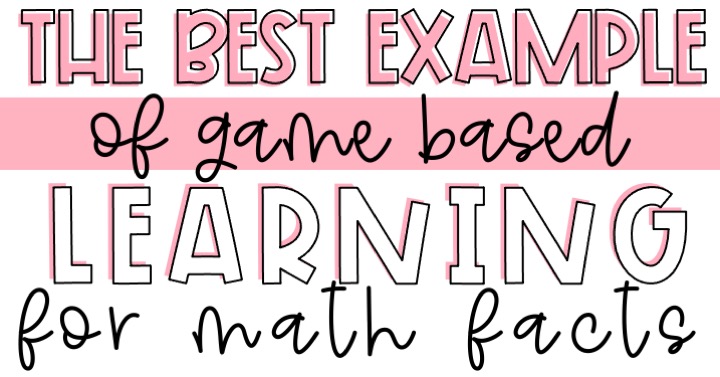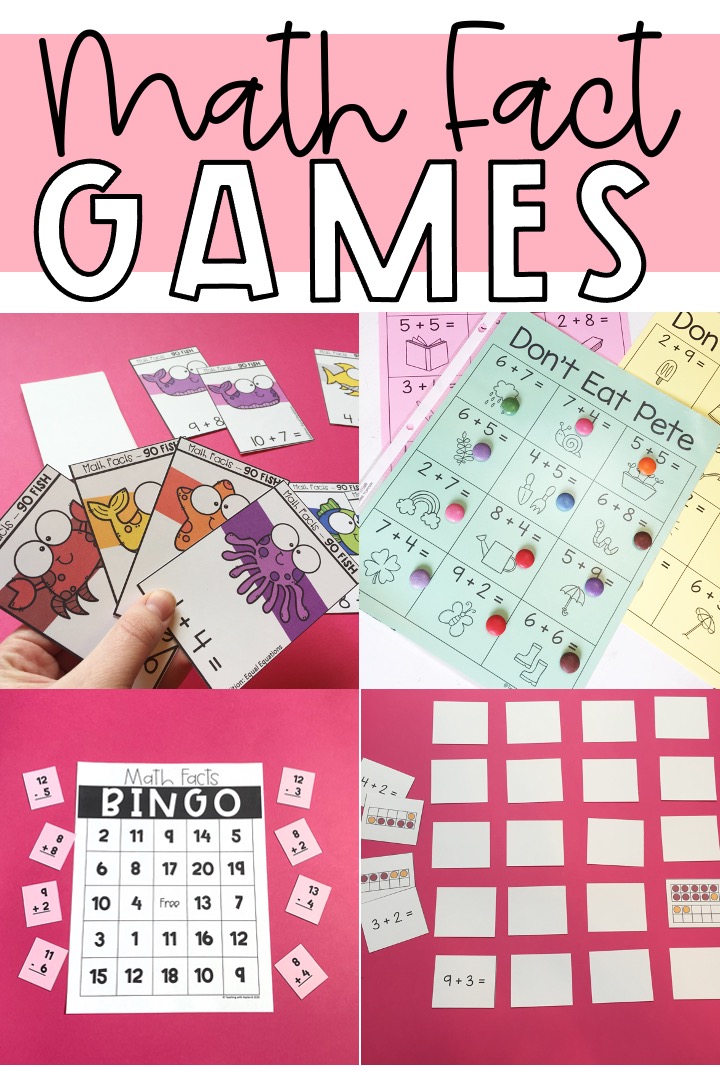
Example of Game Based Learning
Today I’m sharing the best example of game based learning for math facts because when students are drilled with timed tests and flashcards to learn math facts, it is not very meaningful or motivating for students. Students love to play games and the truth is, it’s easy to incorporate math facts into games.
In my classroom, I’ve seen students choose to play math fact games for inside recess than play with all of my fun inside recess toys. And I know that wouldn’t be the case if I had my students practicing with timed tests.
What is Game Based Learning
Let’s start off by going over what game based learning is. Simply put, it is when you put learning activities into game form. To do this I like to think about classic children’s games like memory match, Old Maid, and Bingo and think about what I am trying to get my students to practice. Then I can make a game where I put those concepts into it.

Examples of Game Based Learning
My first example of game based learning is Math Facts Bingo. The playing boards have numbers 1-20. Then students take turns pulling out an equation card. They say the answer to the math fact and then everyone finds the answer to the fact on their playing board. The first player to get 5 in a row, wins. Find Math Facts Bingo to play in your classroom here.

My next example of game based learning is Math Facts War. I print equation cards out and laminate them. I have different versions so I can differentiate to students’ needs. A small group of students get together and pass out the cards evenly until all the cards are gone. They group their cards in a pile face down. Then on the count of three, all the players lay down their top card. The player whose answer is the highest number gets to keep all of the cards. Then they just repeat this. Find Addition Math Facts War here and Subtraction Math Facts war here.
Math Facts Memory Match is a simple game. Students lay out the cards face down. Then they take turns flipping over two cards trying to find matches. When they find the answer that matches the equations they find a match and get to go again. Find this game here.
Don’t Eat Pete is fun for students and little prep for teachers. Just print off the playing board and put it in a sheet protector. Students take turns choosing a square to be “Pete.” One student steps away while the rest of the group chooses. Then they come back and pick candy off each square while saying the answer to the math facts. When they go to pick up “Pete”, the group shouts ”Don’t Eat Pete.” Then they start again with another player. I have different Don’t Eat Pete playing boards for the whole year. Find the addition ones here and the subtraction ones here.
Read about more addition and subtraction games here in this blog post: The Best 9 Games for Practicing Math Facts
Game Based Learning Math
Now you might be wondering how to incorporate game based learning math games into your classroom schedule. Here are some ideas that have worked in my classroom.

Guided Practice
After teaching a math fact strategy like the Make Ten strategy, have students play a game that has them practice that. I have versions of Math Facts Memory Match and Math Facts Go Fish that have a Make Ten version included. Having students play a game is a great guided practice activity. Students get support one another as they work with each other. As students are playing the games, I’m walking around monitoring and giving support as needed.
Center Activities
Putting game based learning into your centers is super easy. If they are already prepared then you can just set them out. I especially like having Math Facts Bingo always ready if I’m short a centers activity. Students are always asking me, “Are we playing Math Facts Bingo today?” Find my Math Facts Bingo game here.
Fast Finisher Activities
I love to leave out math fact games as fast finishers. I have a bin with all the games in our classroom. When students finish an assignment early, they can play a game. I love this because students actively choose to practice math facts. Read this blog post for more fast finisher activities: 12 Fast Finisher Activities That Are So Fun
I hope you have been able to see how it’s easy to incorporate game based learning in your classroom. When students are motivated to practice math facts, they get to math fact fluency a lot faster.

For more tips to getting your students to math fact fluency, check out my free workbook for 1st and 2nd grade teachers. Download your free copy here.


